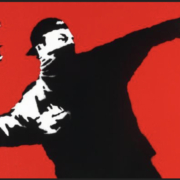Calling out cat calling: Men need to step up
If you’re a woman, particularly if you live or work in an urban setting, you are bound to be cat called. What’s cat calling? This is typically when men (and sometimes boys), alone or in groups whistle, make sexually suggestive comments or noises when women or girls pass by, or say, at different volume levels expressions commenting on how women look, or their suitability as a sexual partner.
This can include saying “hey beautiful,” “looking good,” or when men tell girls and women to “smile,” etc..
This behavior is pervasive and insidious. It is part of street culture in many cities. And most women don’t like it. It makes them feel uncomfortable, intimidated, threatened, assaulted and generally unsafe. It’s unwanted, and unnecessarily objectifies them. It makes most women leery about going out in public alone, or even accompanied by a male they know. They even report, taking different routes home, or preferring to drive and not walk.
Just because men don’t witness cat calling, does not mean that it doesn’t happen, nor with the intensity that women report it. Because when women are with men they are less likely to be cat called.
Why is cat calling bad?
Everyone (regardless of race, gender, religious preference, sexual persuasion, etc.) has the right to walk down our city streets, the halls of their apartment building, take the elevator to their office, and shop without being accosted.
Not only is cat calling an everyday urban incivility, bullying, and sexual harassment, but it frustrates women’s personal autonomy.
It also puts women in an impossible situation. They either a. respond and say stop and then get berated or attacked, b. ignore, and potentially still get berated and 3. Respond and say thanks and either be pulled into a conversation that turns negative or feel shitty about tolerating it.
Over time, cat calling has a negative psychological effect on women, who constantly have to deal with this low level of constant threat. It may even shape life trajectories, personality, self-confidence, and how young girls grow up.
Moreover, cat calling contributes to overall negative perception of women.
Why does it happen?
Since cat calling is primarily performative (few men actually think that the women they cat call will stop and go on a date with them), it’s better seen as a way that men demonstrate and assert their power over public space in what is unquestionably a sexist society. If done in the company of other men, cat calling is also a mechanism to show other men, that they are part of an in-group or subculture.
Cat calling is an extension of lots of male communication like that coming from boisterous men in what is labeled locker room talk, or slut shaming.
How can we change this state of affairs?
Most men never get cat called, nor sexually harassed. Few know what they do is called cat calling. Some men, when confronted about their cat calling, give lame excuses or offer hollow justifications. They say that their cat calling is intended to be flattering and, that some women really like it. These knuckleheads have a hard time putting themselves in others shoes.
Plain and simple, all men must stop cat calling and call out others when they see it. (But consider the following, if you saw someone messing with your car you would certainly intervene, so why would you not do this with cat calling?).
Since cat calling is part of a continuum of sexual harassment of women, many of the solutions that have been advanced to deal with sexual harassment can also be applied to cat calling too.
If you are a male, especially if you have a wife, mother, sister, or daughter it’s important to call out boys and men who cat call. I’m not suggesting that males do this in a macho manner. I’m not implying that you should get into a fist fight. It may be truly dangerous to intervene. So what can we realistically do?
One of the best resources on this matter is the Stop Street Harassment (SSH) organization, a nonprofit entity is “dedicated to documenting and ending gender-based street harassment worldwide.” They have a number of practical suggestions not just for women but men also to combat cat calling. They break down these strategies into four categories, including: “assertively respond to the harassers calmly, firmly, and without insults or personal attacks, “Hand the Harasser a Flyer,” “let the harasser know that their actions are not condoned by others. Ask them if they want help and what they’d like you to do or simply check in to see if they’re okay, “if the harassers work for an identifiable company, call or write the company to let them know that their employees are harassing people on the job and why that is unacceptable,” “Report to Police or Transit Workers,” take a photo or video and upload on social media or an app like hollaback that is specially designed to report cat calling, and “Take Creative Action.”
The time to act is now to make women’s life safer and to assist in creating and enabling more equitable public spaces.
Photo Credit: Molly Des JardinFollow
no catcall zone
In Union Square, NYC.











